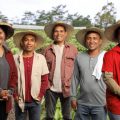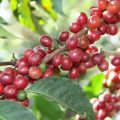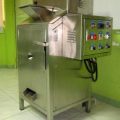In the context of sustainable agriculture, society should be able to meet both food and textile needs without compromising the future generations to do the same. While sustainable farming practices is relevant, it is also important to pay attention to the materials that we use to package agricultural products.

With the introduction of synthetic polypropylene as packaging material, sacks made from natural fibers including jute and kenaf are slowly being neglected by farmers. The preference for cheaper alternative became the new norm.
As the world starts to realize the negative effects of using synthetic materials to the environment, using eco-friendly materials becomes an efficient and sustainable alternative. Sacks made from jute, kenaf, and other natural fibers are slowly making a comeback.
Aside from being biodegradable and reusable, jute sacks can preserve the quality and germination capability of grain commodities intact as air can pass through the bags easily. It can protect grains from heat and sunlight as well. Unlike its synthetic counterpart, jute sack is easier to handle because it does not slip off when stacked. Another advantage is that its production does not require the use of harmful chemical.
“These natural fibers (i.e. jute, abaca, coir kenaf and sisal) are of vital importance to the livelihood and food security of farmers in some of the poorest regions of the world. They provide employment for low-income populations in rural areas while contributing to food security in times of drought,” said Kaison Chang, senior economist at the Food and Agriculture Organization of the United Nations (FAO). It is a cash crop for millions of poor and marginal farm families of South Asian countries according to reports.
Jute production in the Philippines
Known as the “golden fiber,” jute fiber is extracted from the bark of two closely related annual herbaceous species, Corchorus capsularis L. and Corchorus olitorius L. belonging to the Tiliceae family. It thrives in tropical lowland areas with humidity of 60-90 percent. Jute is a rainfed crop with little need for fertilizers or pesticides.Cultivating jute also enriches the fertility of soil for the next crop.
In the Philippines, the last recorded jute production was in 2008 according to the Philippine Statistics Authority. In their database, North Cotabato and Cagayan were the only provinces that have reported jute production. According to the Department of Agriculture-Bureau of Agricultural Statistics, the top producers of saluyot in 2006 were Ilocos region, particularly Pangasinan; and Western Visayas.
Under Agriculture Secretary Emmanuel F. Piñol’s directives, the Philippine Fiber Industry Development Authority (PhilFIDA) and the Bureau of Agricultural Research (BAR) were tasked to study the jute industry particularly jute as a source of natural fiber for packaging material. The instruction was to explore the commodity and the mechanisms that will facilitate import substitution of jute sack.
Likewise, the Bicol Integrated Agricultural Research Center (BIARC) of the Department of Agriculture-Regional Field Office (DA-RFO) 5, embarked on a study that aims to determine the current status of jute production in the Bicol region.
PhilFIDA’s research initiative on jute as materials for packaging
According to Dr. Remedios V. Abgona, chief of the Fiber Utilization and Technology Division of PhilFIDA and project leader, “in the Philippines, the coffee and cacao growers are one of the major users of sacks for packaging coffee and cacao beans. With the growing demand for these commodities, requirement for packaging materials will also follow.” However, the only jute sack mill, Mackie Industries, in the Philippines closed down many years ago.
According to Joel Lumagbas, one of the board members of Philippine Coffee Board Inc., there is a law by the International Coffee Organization specifies that the packaging material to be used for exportation of coffee is jute sack with 60 kilogram capacity. The project found that local coffee and cacao growers import jute sacks from other countries such as Pakistan, Sri Lanka, and India.
Part of PhilFIDA’s study is to determine the availability and consumption of jute, jute sack, and other products (imported and local) in the Philippines. The research team found that in Nueva Ecija, jute is primarily cultivated for food consumption. Moreover, interviewed coffee growers and associations that use jute sack as packaging material for their commodity expressed their concerns. Jute sacks tend to grow molds faster. The fabric easily loosens even if they use brand new sacks. It also gets heavier when wet. Most of the interviewed participants shared that the lack of affordable and quality jute sack in their area is their main problem with jute sack as packaging material for their commodities.
According to Dr. Abgona, “one of the advantages of using jute sack is it prevents moisture accumulation in dried beans and the air in the sack can circulate freely. Molds tend to grow faster only in wet jute.” She also shared that, “woven jute fabrics are more durable compared to synthetic materials. [However,] improper handling can lead to the early deterioration of the quality of jute sack.” She also explained that, “jute sack is porous, so it will easily absorb and retain water; [thereby making it heavier]. But, this situation happens only if the sacks are not properly stored,” shared Dr. Abgona.

Hopefully, through the study, PhilFIDA aims “to provide the government as well as prospective investors the needed information on jute fiber production for policy formulation, decision making and needed interventions for jute production and its consideration as packaging material,” ended Dr. Abgona. ### by Rena S. Hermoso, bar.gov.ph
For more information:
Dr. Remedios V. Abgona
Chief, Fiber Utilization and Technology Division
Philippine Fiber Industry Development Authority
email: philfidaoed@yahoo.com/ftud_fida@yahoo.com
phone: 273 2474 local 2681







